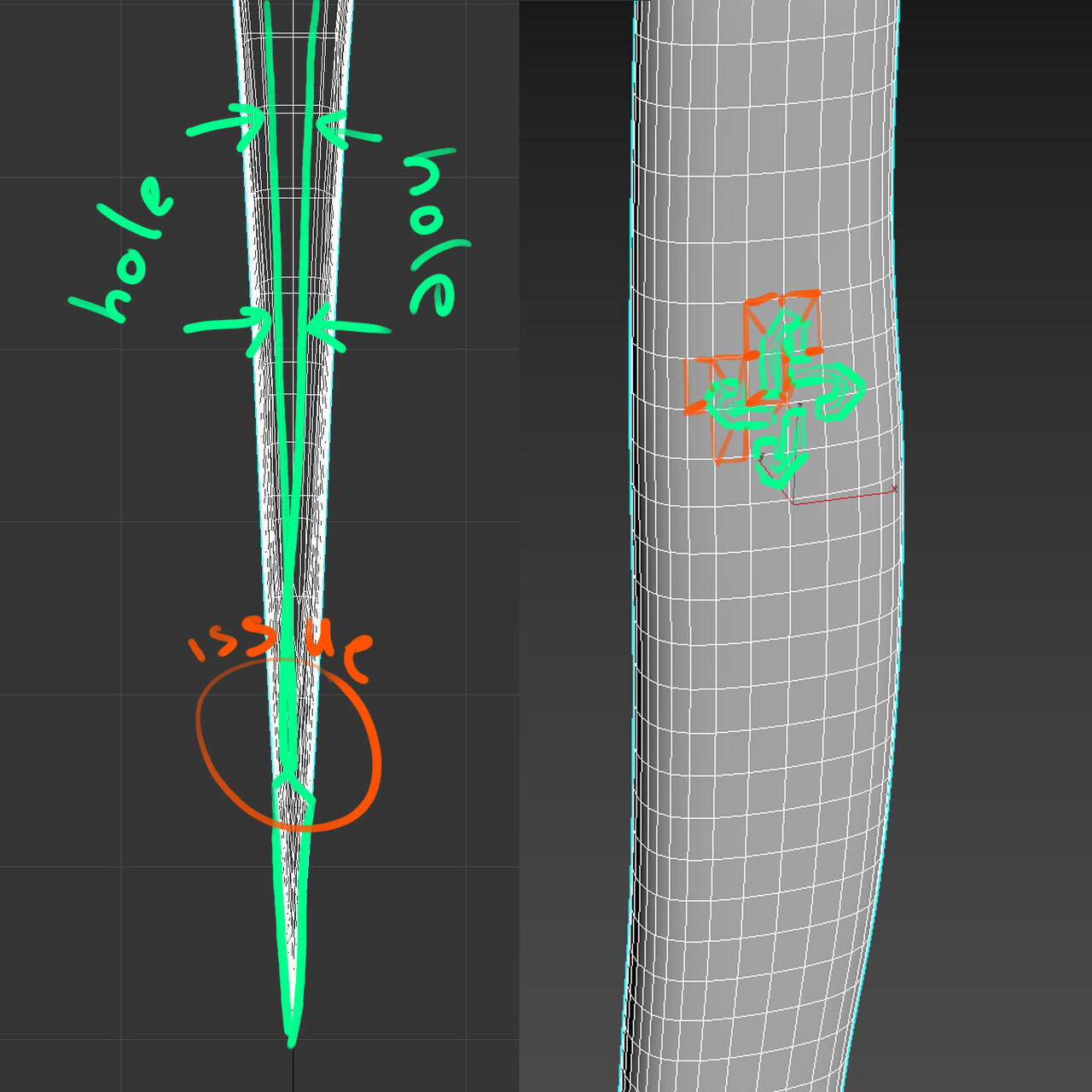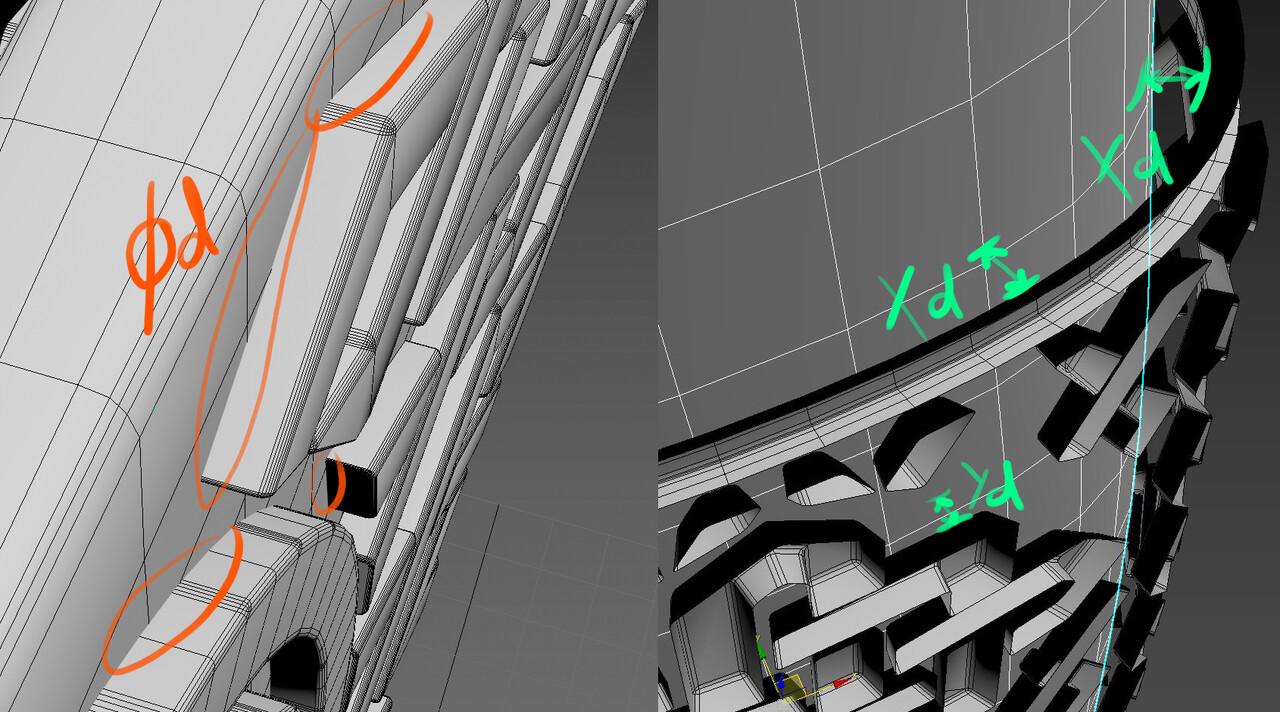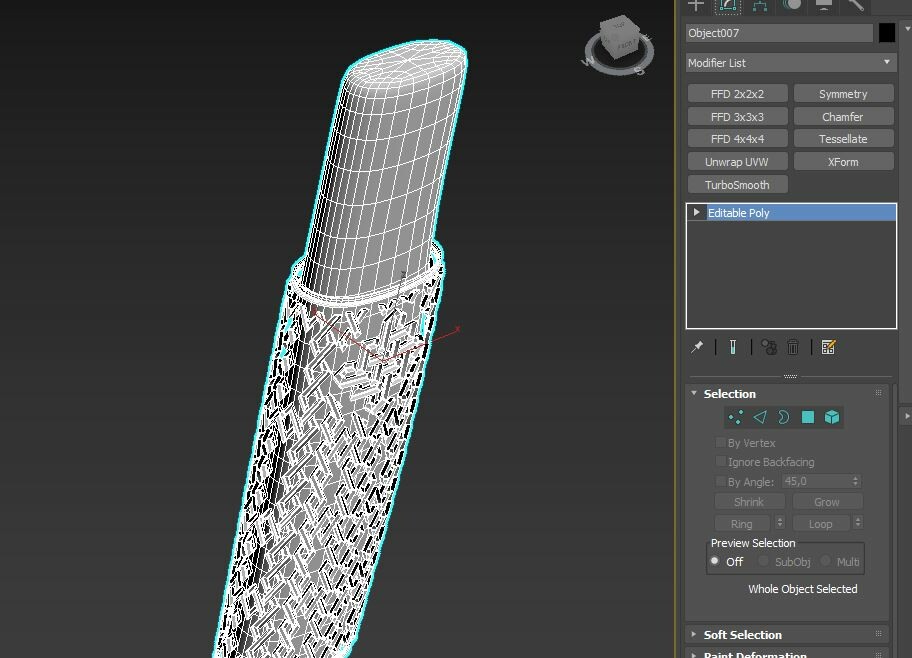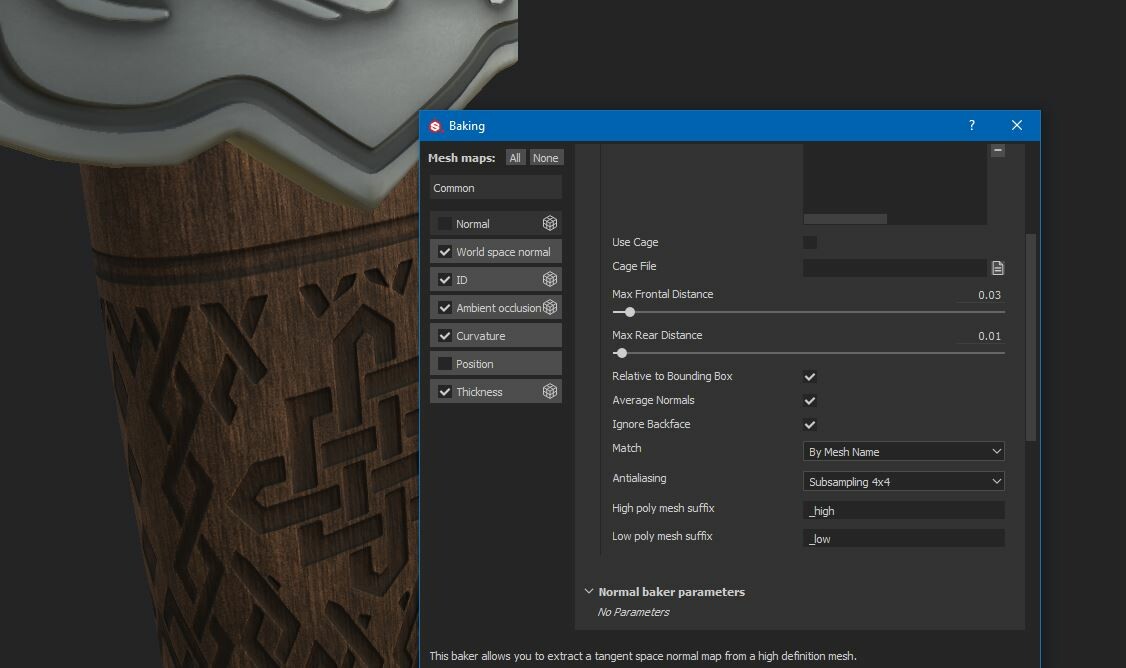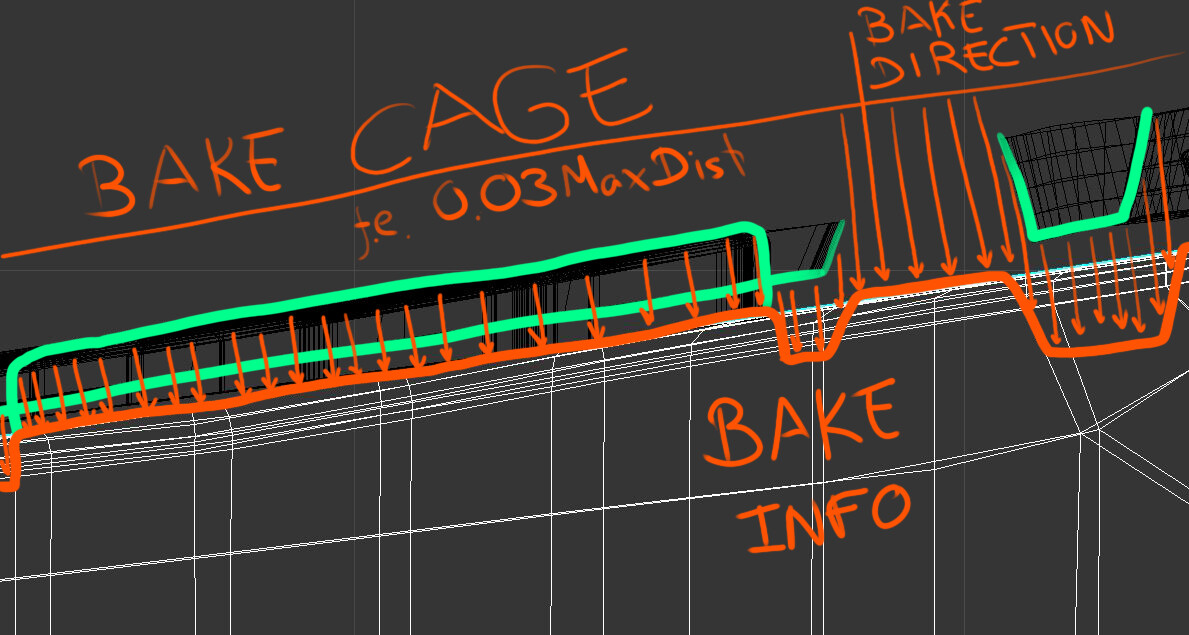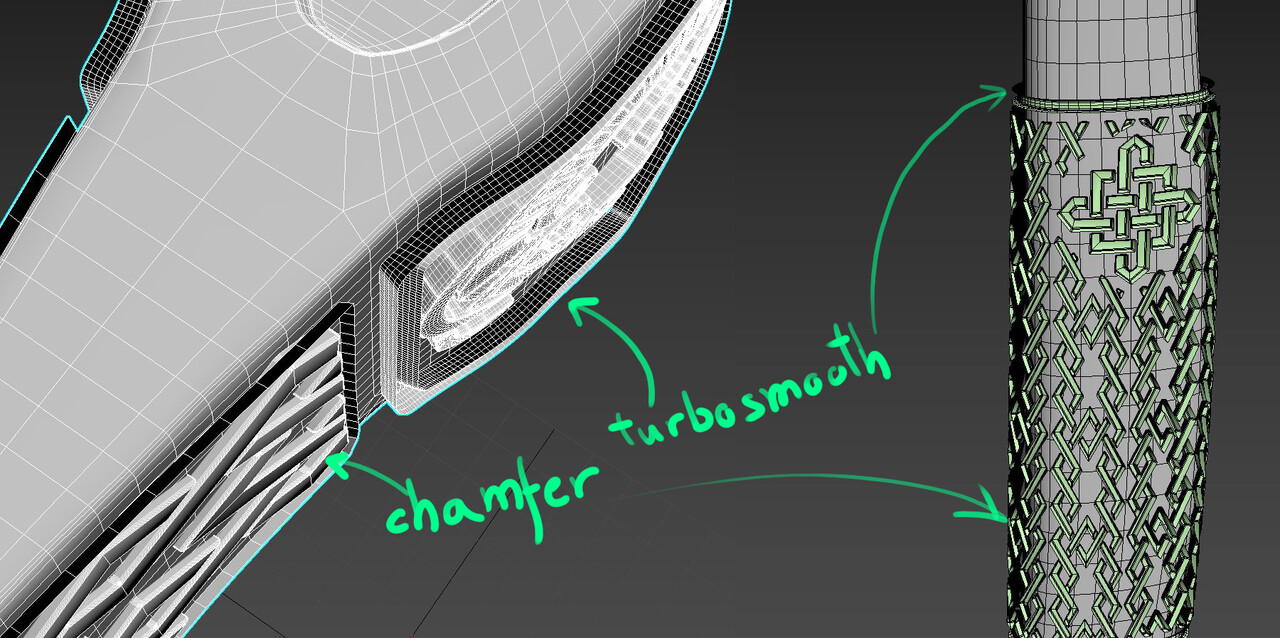Hey guys, today I'm going to talk about floaters, their usage for high poly details and how to think of them in order to bake with good results.
First of all, let's explain a bit what are they good for, and what can you do on them. Floaters are the best way to resolve concavities and extruded details in places where inner and outer cage of bakes intersect with other faces. Also, when you don't want to get a mess of N-gons or a lot of edges on the high poly to avoid artifacts on bakes. As they will become floating elements inside SAME mesh or object, baking programs will interpret them as holes or extrusions of that main mesh.
Floaters, as the name suggests, tend to be "floating" at a distance X, or Y -whatever-, from the mesh we want the details on. BUT they can also be intersecting the main mesh. So, they are called floaters not because they are at a certain distance of the mesh, but because they are separate elements with no vertex and edges shared between main mesh and them.
- Intersecting floaters are only for the extruded details, where the important information is mainly on the element peaks, a detail stepped out from the mesh. The deepest part tends to intersect mesh so the bake interprets it as an extruded detail with no artifacts where the elements come together. The more we extrude the elements the weirder the bake will become, tho. On the image above, the example is marked with orange, were there are no visible edges on the detailed extrusion, as it is located inside the main mesh.
- Separate floaters are the concavities, holes, scratches, etc. that must not touch main mesh in order to prevent issues upon bake on their deepest part of the element. On the image above they are marked in green,and you can see that I gave more distance just in case I wanted to do a larger intrusion of the hole, but it's not that far from the mesh as it has quite a zoom in. On this case, the larger the intrusion is, the weirder the baking gets. Normal and bump maps have their limits when you bake too large holes or extrusions on a plane.
To know how much we can separate the deepest part of the floater on a concavity one, or how much far we can get on an extrusion detail, we must understand first the baking engine we're going to use. But don't forget that it's very important to attach these floaters we make to the main mesh which we want them to add the detail, if you use the "Bake by mesh name" of a software such as Substance Painter, Marmoset, etc. While if you bake the object as a hole, you will be exporting it as a single mesh or as many meshes under a single .obj/.fbx.
As an example, I'm going to talk about Substance Painter. For most of the bakes I've done in 2 years, I use a distance of 0.03 in Max Frontal Distance. and barely use the Max Rear Distance so I leave it that way. Why do I barely use Rear Distance? Because my holes are mostly always floaters, that's something that will be in front of the mesh and therefore only calculated by the frontal cage. As for the Max Frontal Distance, in case the bake gets issues we will alter it most of the times to a little higher value. On those cases, the issue might be that the cage is not getting as far as the details are going and this is the reason why I tend to put the details really close to the main mesh.
It is really important to understand how the bake works also. This image above is a Z-section of my axe blade model. Most important of all, is to understand that the bake will only take information from the farthest point where a mesh is. On the left part of the example above, we see in green two overlapping elements, but only one surface is further than the other and that's the info the bake will take. Also, another important thing to understand is that where the bake doesn't find a floater info, he will just interpret it as a "plain" area or the "0" distance for the normal map, as we can see on the right side where there are no floaters between those two.
Another dumb but important fact is that floaters, as they are commonly worked on a separate mesh and later on added to main one to bake, can get many different modifiers that the main mesh didn't get. Main mesh maybe doesn't need a chamfer or a turbosmooth but you need those details an extra modification to look better, add them without caring much about how those edges will integrate with the mesh, because as we have seen there's not such intersection we need to care about polygon construction.
Last but not least, I just want to remind you that as I have said previously there are limitations to normal or bump maps. If it feels too plain, you should probably go for a real extrusion or hole in the lower poly version! Magic has a limit ;)
